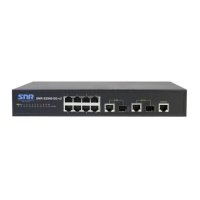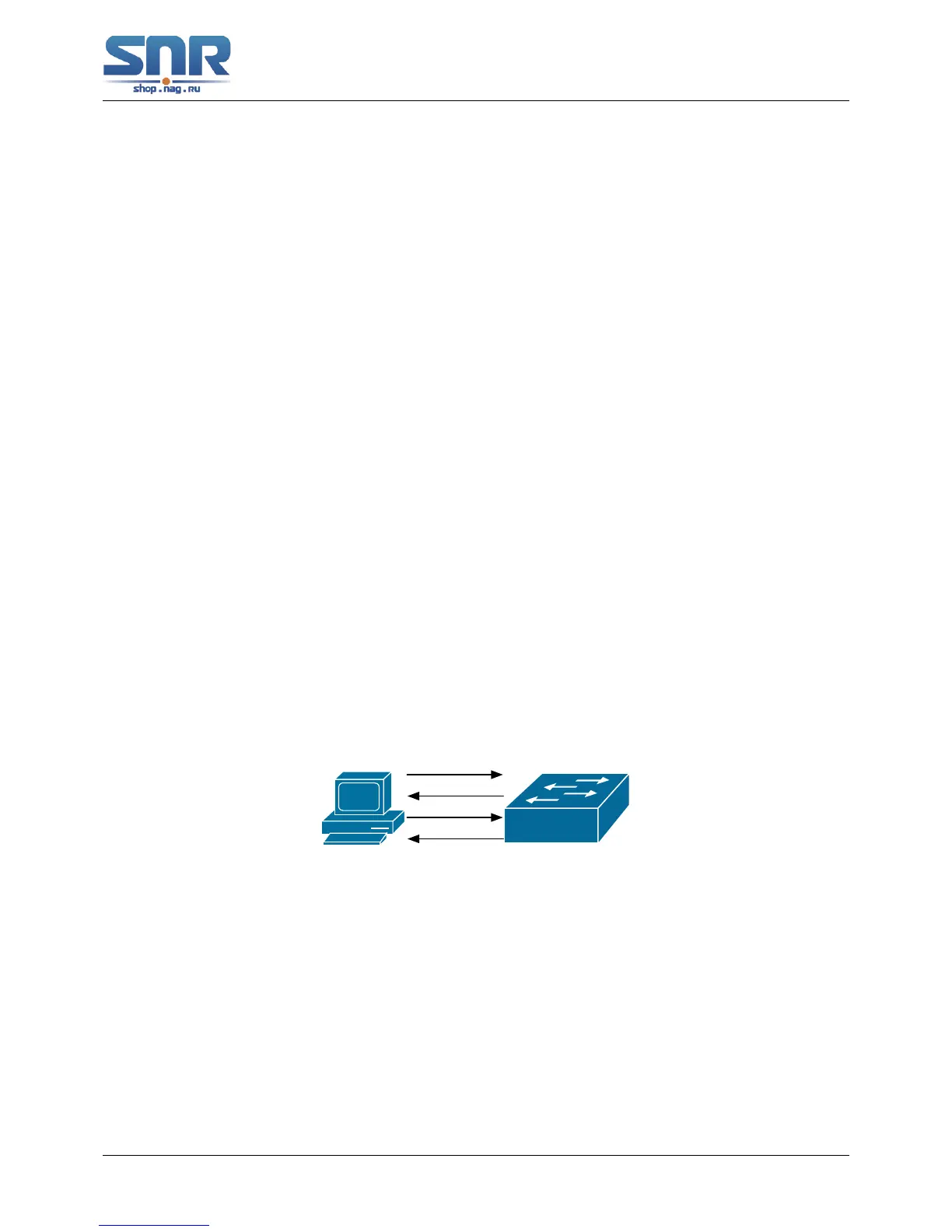SNR S2940-8G-v2 Switch Configuration Guide
DHCP Configuration
Chapter 34
DHCP Configuration
34.1 Introduction to DHCP
DHCP [RFC2131] is the acronym for Dynamic Host Configuration Protocol. It is a protocol that
assigns IP address dynamically from the address pool as well as other network configuration pa-
rameters such as default gateway, DNS server, and default route and host image file position
within the network. DHCP is the enhanced version of BOOTP. It is a mainstream technology that
can not only provide boot information for diskless workstations, but can also release the admin-
istrators from manual recording of IP allocation and reduce user effort and cost on configuration.
Another benefit of DHCP is it can partially ease the pressure on IP demands, when the user of an
IP leaves the network that IP can be assigned to another user.
DHCP is a client-server protocol, the DHCP client requests the network address and configura-
tion parameters from the DHCP server; the server provides the network address and configuration
parameters for the clients; if DHCP server and clients are located in different subnets, DHCP relay
is required for DHCP packets to be transferred between the DHCP client and DHCP server. The
implementation of DHCP is shown below:
Figure 34.1: DHCP protocol interaction
Explanation:
1. DHCP client broadcasts DHCPDISCOVER packets in the local subnet.
2. On receiving the DHCPDISCOVER packet, DHCP server sends a DHCPOFFER packet
along with IP address and other network parameters to the DHCP client.
3. DHCP client broadcast DHCPREQUEST packet with the information for the DHCP server it
selected after selecting from the DHCPOFFER packets.
219

